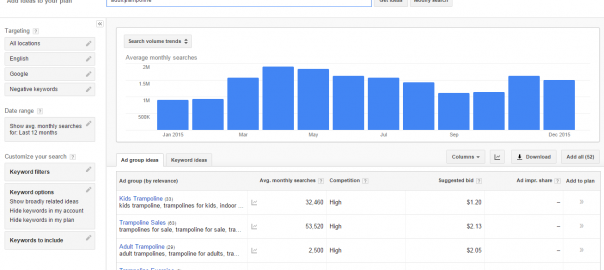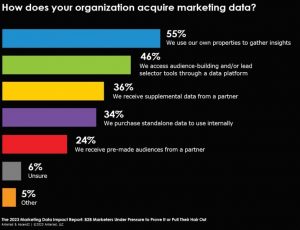When Justin Butlion, content and social marketing manager at Yotpo, analyzed data across 18,000 small to medium eCommerce sites, he found, “30.5% of all traffic was coming from organic searches on Google, Bing, Yahoo, and other search engines. There is a constant debate going on regarding the relevance of SEO for online businesses, but 30% is significant, so it still needs to be a focus for any small online business owner.” To illustrate how that traffic translates into dollars, first we need to deterrmine average eCommerce conversion rates and order values. Then, we can gather a more tangible understanding of the value of SEO for small, medium, and large eCommerce sites.

In a blog post, Bigcommerce’s Katey Ferenzi pointed out that average eCommerce conversion rates were between 2-3%. A recent survey by Statista revealed U.S. shoppers spent an average of $ 77.90 per order in Q3 2015. Assuming conversion rates were flat across all channels (they’re not, but for the sake of this argument, we’ll assume so), this means average sites that inbound 1,000 visits per month overall earn 305 organic visits from search engines, convert six to nine orders and generate $ 475 to $ 713 from their SEO traffic. Sites with 10,000 visits per month earn $ 4,750 to $ 7,130 from SEO every month. With 100,000 monthly visits, SEO drives $ 47,500 to $ 71,300 worth of value. And, finally, for sites with 1M+ visits every month, SEO is responsible for between half and three-quarters of a million dollars in sales.
For eCommerce brands of all sizes, SEO is an incredibly lucrative marketing channel. In an article for Search Engine Land, SEO expert Trond Lyngbø notes that SEO:
- Is an investment with high ROI
- Impacts how buyers research your product and mature through the sales cycle
- Multiplies the impact of your other marketing efforts
- Builds trust and credibility among customers
- Allows your brand to stay ubiquitous
- Provides opportunity to compound traffic as you improve your overall SEO profile
So, for eCommerce marketers that want to increase their rankings on Google, Bing, and other search engines, here are nine suggestions that may help you drive dramatic results.
Be selective when branding products
Though you may be tempted to name your kid-sized trampoline the Jumpmaster4000 you’ll regret the decision after discovering your number one spot in the search engine results pages (SERPs) is only viewed by one person each month (and that’s you checking your own ranking!). Allow your products to stand out based on their merit — more than a catchy (or unusual) name — and use generic terms to reference your products.

Currently, Google’s Keyword Planner tool estimates the search term “Kids trampoline” generates 32,460 monthly searches. Securing the top spot within the SERPs will net you a cool 11,815 monthly clicks. By comparison, the second- and third-ranked results would deliver 4,057 and 3,084 clicks, respectively. By opting to label products with language customers are familiar with, you capture a larger audience with high purchase intent.
Consistently create good content
For lifestyle brands, interviews with industry experts and news coverage of current trends are just two examples of ways to produce compelling content that audiences and Google will love. Consumer tech companies, on the other hand, can create instructional content (e.g. how-to’s) to demonstrate how users can get the most value out of their product.
Many eCommerce companies rely solely on product pages to drive SEO. But with only space to insert a thoughtful product description, brands lose out on the opportunity to publish in-depth stories their customers would enjoy, motivating readers to stay on-site longer, link back to your work, and share it with friends.
Among the brands that are crushing it with content are: MR PORTER (The Journal), Patagonia (Mile for Mile), and UrbanDaddy (Kempt).

Consolidate duplicate content
A common SEO misunderstanding among marketers is more is better. What actually works best is a balance between quantity and quality. So, whilst some brands may host three individual pages for a single product sold in three different colorways, savvy marketers would otherwise consolidate the three product pages into one. That way, Google never has to pit your three pages against each other and you get to avoid the red flag Google issues when it detects duplicate content.
Craft a mobile-first experience
In March 2015, Google formally included mobile responsiveness as a ranking factor for search results. In May, Google announced that mobile search queries surpassed desktop searches. The company stated, “Consumers are increasingly picking up their smartphones for answers. In fact, more Google searches take place on mobile devices than on computers in 10 countries including the US and Japan. This presents a tremendous opportunity for marketers to reach people throughout all the new touchpoints of a consumer’s path to purchase.”
But to create a website that is sufficiently mobile-friendly, marketing consultant Brian Honigman advises companies:
- “Design for performance.” Quick-to-load pages are a must.
- “Focus on user experience.” Limit the use of Flash, plug-ins, pop-ups, and interstitials.
- “Optimize for local search.” With GPS tracking, local relevance is an increasingly important factor in mobile SEO.
- “Track mobile keywords.” Users enter different queries on their desktops compared to their smartphones. And, often, the results for the same query are different on both devices.
Earn links through product reviews and public relations
Bloggers everywhere are keen to get their hands on free swag. For eCommerce companies, one of the easiest ways to build relevant backlinks is by bribing journalists and members of the media with sample goodies in exchange for a formal product review. Of course, in order to comply with FTC regulations, brands must ensure that bloggers disclose the fact that they received free product as part of the review. And to build a brand consumers not only notice but admire, traditional public relations (PR) can do wonders.
Dave Gilboa, founder and CEO of Warby Parker, attributes a large part of the company’s success to its partnership with a skilled fashion publicist that helped the company secure media coverage in GQ and Vogue. In an interview, he said, “We were just blown by the impact of getting these great features. GQ called us the ‘Netflix of eyewear.’ And we just started getting orders pouring in.”

For SEO, product reviews are an easy and efficient way of generating links. Traditional PR, while difficult and unpredictable, can be incredibly rewarding because a link in The New York Times or any other major media outlet and be a boon for business.
Enhance product pages with custom content
Some brands default to manufacturer recommended product descriptions. Often though, those are boring and dull. In every product description box, eCommerce marketers have the opportunity illustrate the appeal and value their products have to offer. Shopify’s Mark Macdonald recommends copywriters use the following nine tactics to craft compelling product descriptions:
- Communicate to your ideal customer
- Tease buyers with your product’s biggest benefits
- Include product details and features customers value and avoid voicing your own (biased) opinion
- Support any use of superlatives with facts that prove your product is the best in its category
- Help consumers imagine what their lives would be like if they owned your product
- Share a brief story to lower a customer’s guard
- Employ sensory language
- Apply social proof
- Format your product description with bullets and sufficient white space to make it easy to scan
Interlink your content
Some of the most brilliant SEO changes you can make are invisible to audiences but are incredibly important to Google. For example, site architecture can have a tremendous impact on how well search engines “crawl” your website. But fully restructuring a website can be a technical nightmare. To partially remedy their situation, marketers can manually insert links that interweave their content. Furthermore, three benefits to strategic internal linking are:
- Keeping audiences engaged by directing them to related content
- Improving search ranking when you carefully insert relevant “anchor text” along with your links
- Directing Google to other pages on your site
Reduce your bounce rate
Google’s mission is to deliver the perfect search result. One of the lesser known signals it uses for its proprietary search ranking algorithm is visitor engagement and bounce rate. Pages that do not keep users on-site for long and have an alarmingly high bounce rate demonstrate that they are irrelevant to most users. Because Google measures how search engine users respond to your content, eCommerce teams should carefully monitor what happens when people visit their site.
To lower your bounce rate, digital marketing expert Nick Eubanks insists:
- Get rid of pop-ups
- Develop an attractive website design
- Speed up page load time
- Create an intuitive navigation bar
- Feature a helpful 404 error page
Salvage decommissioned product pages

How disappointing is it to desperately search for a product you’ve been longing for only to discover that it has been discontinued? With no other options, most customers typically walk away with low spirits. And brands simply delete the page and move on with their lives.
But, Trond Lyngbø, believes this is a fatal SEO error. “All e-commerce websites have products that will never come back, like consumer electronics or fashion clothing stores that constantly replace products with newer models and styles. Many e-commerce websites delete the pages and take no further action. From an SEO perspective, this is bad. You lose SEO value, and people who bookmarked the URL will get an error message.” Instead, Lyngbø suggests website admins use a permanent 301 redirect to send that traffic to another page with similar products or to the product’s parent category page. Alternatively, brands can maintain the same URL and repurpose the page to highlight comparable items.
Digital & Social Articles on Business 2 Community(109)








